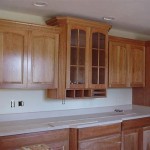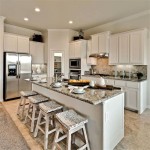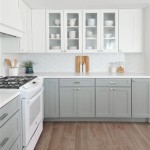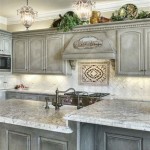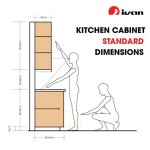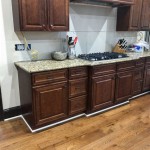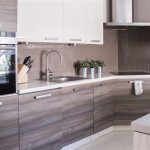How Far Apart Should Kitchen Floating Shelves Be?
Floating shelves offer a stylish and practical solution for maximizing storage space in kitchens. They create an airy look while providing additional room for displaying decorative items, cookbooks, spices, and other kitchen essentials. However, determining the optimal spacing between floating shelves is crucial for both aesthetics and functionality. This article will explore key factors to consider when deciding how far apart to position these shelves, ensuring they seamlessly integrate into your kitchen's design and enhance its usability.
Factors to Consider for Optimal Spacing
Several elements influence the optimal spacing between floating shelves in your kitchen. These factors include:
- Height of the User: The primary user's height is a crucial consideration. Ensure the shelves are readily accessible without requiring excessive stretching or bending. For shorter individuals, placing shelves closer together might be more convenient. Conversely, taller individuals may prefer wider spacing to avoid bumping their heads.
- Size and Shape of Items to be Stored: The dimensions of the objects intended for storage on the shelves play a significant role. If you plan to store tall items like cookbooks or large serving platters, consider more generous spacing. For smaller items like spices or jars, closer spacing can be practical.
- Visual Appeal: The overall aesthetic of your kitchen is another important factor. Spacing should be visually balanced and proportionate to the size of the room and the style of the cabinets. Wide spacing can create a minimalist look, while closer spacing can provide a more visually packed feel.
- Functionality: Consider how you will use the shelves. For frequently accessed items, easier access may require wider spacing. For decorative items, you might prioritize visual appeal over accessibility.
Recommended Spacing Guidelines
While there are no strict rules for floating shelf spacing, here are some general guidelines to provide a starting point:
- Minimum Spacing: A minimum spacing of 8 inches is recommended to avoid overcrowding and ensure adequate room for items and access. This spacing allows ample room for storing most kitchen necessities.
- Average Spacing: A common spacing range for floating shelves is between 10 and 12 inches. This spacing provides a balance between visual appeal and functionality, suitable for a wide range of kitchen needs.
- Maximum Spacing: A maximum spacing of 16 inches can be suitable for certain situations, such as displaying large decorative items or when you need a more minimalist look. However, ensure the shelves are still accessible for practical use.
Additional Tips for Effective Spacing
To enhance the effectiveness of your floating shelf installation and optimize their functionality, consider these additional tips:
- Stagger Shelf Heights: Instead of aligning all shelves at equal heights, consider staggering them. This adds visual interest, breaks up the monotony, and can create more usable space. For example, a shelf might be placed at 10 inches, followed by a shelf at 14 inches, and then another at 18 inches.
- Install Shelves at Eye Level: Placing shelves within eye level for the primary user makes it easier to see and access items. This can be particularly helpful for frequently used items.
- Measure Twice, Install Once: Before mounting your shelves, carefully measure the desired spacing and double-check the measurements before drilling holes. Accurate installation ensures the shelves are level and securely attached.
- Use Varying Shelf Depths: Consider using shelves with different depths to create visual contrast and accommodate various item sizes. Shorter shelves can be used for displaying smaller objects, while deeper shelves can store larger items.
- Utilize Shelf Dividers: Shelf dividers can help organize items on the shelves, preventing them from falling and creating a more organized look. These dividers are especially helpful for storing small items like spices or utensils.
By carefully considering these factors and applying the recommended guidelines, you can determine the optimal spacing for your kitchen floating shelves, creating a functional and aesthetically pleasing storage solution that enhances the overall design and usability of your kitchen.

Add A Minimalist Look To Your Space With Floating Shelves Cr Construction Resources

Details On Our Floating Kitchen Shelves Emily A Clark

Tips For Kitchen Shelves With Floating Shelf Placement Ideas

Kitchen Ideas Floating Shelves Hurd Honey

Installing Open Shelving In Kitchen Taryn Whiteaker Designs

Diy Kitchen Floating Shelves Lessons Learned Angela Marie Made

How To Install Diy Floating Shelves We The Dreamers

How Far Apart Should Floating Shelves Be A Quick Guide To Shelf Placement Van Dyke S Rers

Installing Open Shelving In Kitchen Taryn Whiteaker Designs

Diy Kitchen Floating Shelves Lessons Learned Angela Marie Made
Related Posts


